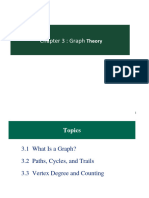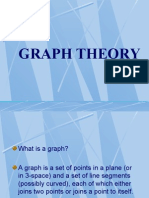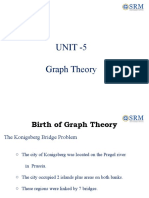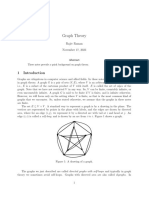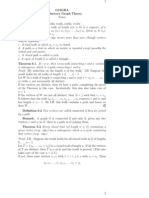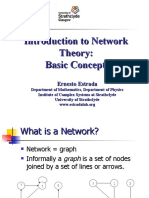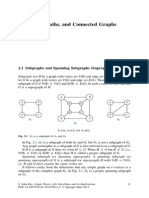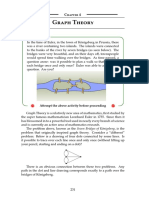0% found this document useful (0 votes)
11 views7 pagesGraph Basic
The document provides an overview of basic concepts in graph theory, including definitions of graphs, cycles, paths, and bipartite graphs, as well as theorems related to these concepts. It discusses Euler's solution to the Königsberg Bridge problem and introduces key terms such as adjacency matrices, isomorphisms, and chromatic numbers. The document also includes proofs of important lemmas and theorems, establishing foundational principles in spectral graph theory.
Uploaded by
serdevosCopyright
© © All Rights Reserved
We take content rights seriously. If you suspect this is your content, claim it here.
Available Formats
Download as PDF, TXT or read online on Scribd
0% found this document useful (0 votes)
11 views7 pagesGraph Basic
The document provides an overview of basic concepts in graph theory, including definitions of graphs, cycles, paths, and bipartite graphs, as well as theorems related to these concepts. It discusses Euler's solution to the Königsberg Bridge problem and introduces key terms such as adjacency matrices, isomorphisms, and chromatic numbers. The document also includes proofs of important lemmas and theorems, establishing foundational principles in spectral graph theory.
Uploaded by
serdevosCopyright
© © All Rights Reserved
We take content rights seriously. If you suspect this is your content, claim it here.
Available Formats
Download as PDF, TXT or read online on Scribd
/ 7



